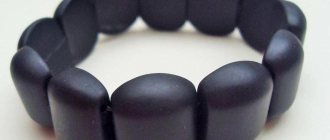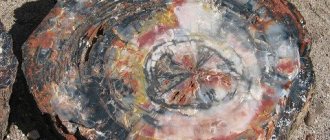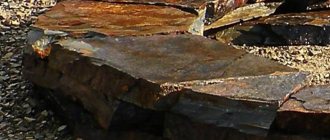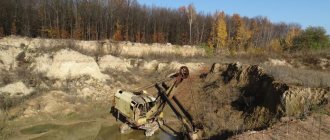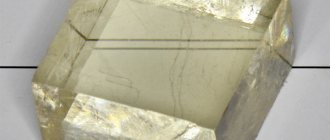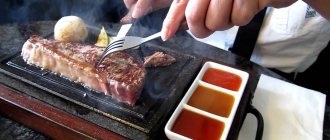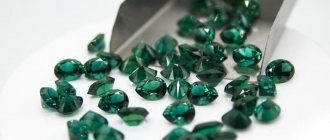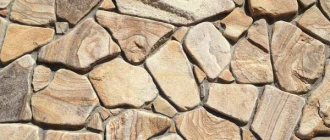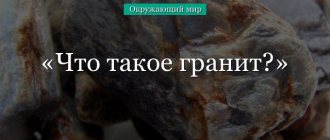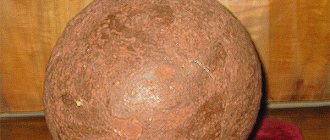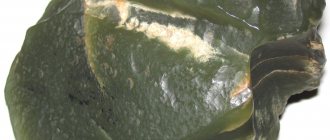History of the stone
Jade processing began in the Neolithic. The stone was used to make weapons, tools, and religious objects. Later they began to make jewelry and household items from the mineral.
Helpful information
Jade was valued by the Mayan people during their wars, making figurines from it. They were broken to free the spirit of the stone so that it would help the owner of the house.
Previously, jade was called jade. The name was changed in 1863, but another mineral, jadeite, has almost the same name. Compared to jade, it is rarer and more valuable. Both minerals are very similar, in China they are still considered the same thing.
The modern name of jade comes from the Greek language, which means “kidney”. The mineral is also called Chinese stone. In this country it is considered sacred.
The Chinese carve various symbols on jade products. The image of a mandarin duck is a love talisman, a fish promises wealth, a blooming peach promises longevity, and a deer speaks of noble origin. The Chinese wore carved plates made of white mineral, believing that their ringing would drive away evil spirits.
Jade is called Maori stone (indigenous New Zealanders). These people used the mineral in the manufacture of weapons, wood carving tools, and tattooing.
Main deposits and production
Jade is formed due to the interaction of magma with sedimentary dolomites, which contain a lot of magnesium. You can find the mineral on almost any continent. The main deposits are as follows:
- In Russia, production is concentrated in Tuva, Southern Siberia at the Ospinskoye, in Transbaikalia at the Khamarkhudinskoye, Khokhyurtinskoye, Buromskoye, Golyubinskoye fields;
- Asia - China (mainly in the Pamirs, Kunlun), Kazakhstan, Myanmar;
- Poland;
- USA - mainly in California, Montana, Washington, Alaska;
- Canada;
- Brazil;
- Mexico;
- New Zealand is a world leader in the extraction of high-quality minerals with the best color.
Jade is found during quarrying and mined in riverbeds and streams by hand. The mineral mined in water is of high quality, and the price of jewelry made from it is higher.
It is noteworthy that almost all raw materials mined in Russia are sent to China for processing.
Development of mining in the 19th century
The opening of the first mine started a chain reaction, one after another new sources of jade deposits were discovered in the country. Leonid Yachevsky occupied a special place in the history of the search for deposits; he not only discovered several mines in the areas of the Kitoi, Onot, Urik and Belaya rivers, but also discovered a huge boulder of rock, which was dubbed the “general’s mineral.” Unfortunately, the fate of the impressively large gem turned out to be sad. Initially, it was decided to make a gravestone from it for Tsar Alexander III, but his wife did not accept the idea, explaining that the rock was not light enough. As a result, the block was simply stolen by illegal miners.
By the beginning of the 20th century, 80 tons of jade were mined. The pace gradually increased, but in 1939, two years after the discovery of the largest Ospinskoye deposit, official mining of the rock was stopped for vague reasons. The state began to deal with the mineral again only in 1965.
The 60-80s of the 20th century became golden years for jade mining in Russia. The Ulan-Khodinsky mine was opened in 1965, the Khamarkhudinsky mine in 1973, the Boldoktinsky mine in 1974, and the Khargatinsky mine in 1977. The year 1978 became especially significant - a point for the extraction of snow-white jade appeared on the map of Russia; this rock is formed in a different way than green. Gems were discovered in the Vitimsky district; currently the mine is called Buromskoye.
It is worth noting that jade is a stone of a very wide color palette, but green gems are most often found in nature. It was with them that until 1978 they mainly worked in Russia, occasionally encountering red, blue, and black minerals. No one expected to find a white stone; it was believed that a rock of this type could only have formed in China.
Mining of the mineral is still developing, with more and more deposits being discovered. For example, in 2003, the Akademicheskoye jade deposit was discovered in the Urals. Gem reserves in the Krasnoyarsk Territory are estimated at almost 350 tons, Buryatia is actively being explored - the Khotiya and Udokan mines have recently been put into operation.
Jade is actively exported, mainly to China, but, of course, there are quite a few problems in the industry that need to be solved. Firstly, Russia sells stones at very low prices, and secondly, illegal mining, carried out using explosives, is thriving. Today, regional authorities—active gem miners—are developing measures to solve the problem.
Types and colors
Jade has a complex chemical composition, including various impurities, so the range of colors is huge. Stones of various shades of green are often found - grassy, marsh, emerald, yellowish.
Jade can be light. It is almost white in color, milky and fawn shades. Interestingly, in China, white jade could only be worn by emperors, high-ranking nobles and enlightened monks. A mineral of this color was the most valuable.
Black jade is considered a valuable species. In the East it is considered a divine stone. According to one legend, the throne of Buddha in heaven is made from it.
The rarest is red jade. It is believed to symbolize the energy of fire. There are many varieties of red jade. The stone can be scarlet, dark cherry, pinkish, or have an orange or crimson tint.
Blue jade is considered a rare species. People usually talk about dianite, a related but not identical mineral discovered twenty years ago and named after Princess Diana.
The color of jade can be uniform or uneven. A one-color mineral is more valuable. Streaks, mottled or cloudy stones reduce the price.
A rare effect for jade is cat's eye. It is provided by parallel microscopic inclusions in the shape of a needle or tube. The effect appears when a light stream is directed onto the stone, and it intensifies when cutting a cabochon.
There are different classifications of jade. In China, there are several varieties of it, named after the place of extraction:
- The most valuable is Khotan. This is a white and grayish stone - they are called the colors of mutton fat. The mineral has a thick waxy matte sheen.
- In Xiuyan County, translucent jade of white or light green color is mined. Transparent stones are less common.
- The most common is Nanyang - a translucent mineral of yellowish or white color. The composition is heterogeneous; the white stone has pinkish, yellow, and green inclusions. Nanyang usually goes to sculpture.
- A yellow mineral with green inclusions is mined in Lantian. There are stones with a cloud pattern.
The special place of Buryatia in jade mining
Altai, Southern Urals, Kamchatka, Tuva, Bashkortostan, Chelyabinsk region... it would take a long time to list the locations of jade deposits in Russia, but even taken together they cannot compare with the reserves of gems in Buryatia.
- Buryatia is a real storehouse of a wide variety of precious and semi-precious stones. Most of the jade deposits are also based in this region. Currently, about 90% of all jade is mined there, and of the 16 active deposits today, 13 have been discovered in Buryatia. It is noteworthy that production rates are growing; over the last twenty years, the figures have increased almost 18 times.
- There are five active mining areas in the region: Muyskoye, Bauntovskoye, Zakamenskoye, Tunkinskoye and Okinskoye.
- Gems of rare shades - blue, red, white - are found in mines located in the northern part of the region on the border with the Trans-Baikal Territory. The most promising are the Kovytinsky, Golyubinsky and Ospino deposits. The Ospinsky mine produces apple-colored jade in the cat's eye style - it is highly valued in Europe.
- By the way, in the Trans-Baikal Territory, adjacent to Buryatia, there is another interesting deposit - Udokanskoye, its remarkable fact is that it contains stones of a honey or gold hue, which are extremely rare in nature.
Jade mining in Russia is a very promising industry; studies show that the deposits of the mineral in our country are huge. Given that work is currently underway at many large mines, new ones are already being prepared, and this is another reason to be proud of the wealth of resources of our country.
Be sure to share the article on social networks, so that your friends will have another reason to respect their homeland.
Team LyubiKamni
Properties
Jade is a semi-precious ornamental stone of the first order along with malachite, rock crystal, agate, and smoky quartz. The mineral has certain physical properties, has a healing effect, and has special magic.
Physical
Jade has the following physical properties:
- fibrous structure;
- high impact strength - it is difficult to split the stone;
- hardness 6-6.5 on the Mohs scale;
- average density 2.95 g/cm3;
- refraction 1.62;
- glass shine;
- the mineral is often opaque, transparency can be observed in chips or plates up to 10-15 mm wide;
- on the fracture the stone is conchoidal, paraffin-like;
- refractoriness, acids have no effect on the mineral.
Although jade is difficult to break into pieces, its fibrous structure makes it easy to process into jewelry. This applies to carvings with polishing, after which a greasy shine appears.
Magical
Jade has magical properties. With the stone you can perform magical rituals, experiments in esotericism, and draw up horoscopes. The magic of the mineral is manifested in the following properties:
- the gift of longevity - for this you need to wear a jade bracelet or necklace; in the past, healers brewed the elixir of immortality with the stone;
- protection from severe injuries and wounds;
- A military jade amulet protects against mistakes and prevents you from making rash decisions;
- development of the gift of clairvoyance, communication with other worlds;
- unlocking mental potential - for this you need to wear jade jewelry, they clarify thoughts, open up non-standard thinking;
- protection from otherworldly influences;
- ensuring family happiness.
Jade jewelry in a frame is an excellent amulet that protects against the evil eye. A red stone protects against natural disasters, so it is worth taking it with you on trips.
Medicinal
The origin of the name of the mineral is fully justified by its healing effect on kidney diseases. It also has other medicinal properties:
- beneficial effects on the lungs and cardiovascular system - relief from shortness of breath, headaches, restoration of normal blood pressure;
- anti-inflammatory effect;
- elimination of rheumatic pain - you need to apply a plate of healing stone;
- jade beads or a bracelet will restore sleep and relieve nightmares;
- wearing a stone on the stomach makes childbirth easier;
- in a bath with jade pebbles, muscle tone increases, material metabolism improves, and the body is cleansed;
- a comb made from this stone strengthens hair, makes it thicker, stimulates cerebral circulation, and has a positive effect on vision and hearing;
- facial massage with jade tightens the skin, smoothes wrinkles;
- the mineral can be used as a warming compress.
Jade and Zodiac Signs
Astrologers have a clear position - any stone must be chosen taking into account your zodiac sign. In this regard, jade is attractive because any sign can wear it. The mineral has a beneficial effect on everyone.
Jade has absolute zodiac compatibility with Virgo. The mineral will help representatives of this sign achieve success in the professional field. The stone will provide Virgo with family well-being if worn on her right hand. Representatives of this sign are best suited for minerals in red shades.
The stone is also perfect for Libra. If you wear jade on your right hand, it will give you longevity.
Jade products
Various crafts have long been made from this mineral. This direction is especially popular in the East. In the 17th-18th centuries in China, the art of stone cutting flourished in full force. Jade was often used to make figurines of mythical animals - dragons, unicorns, hydras.
The mineral was used for various crafts. It was and remains popular for making chess, tabletop sets, vases and cups, bowls, and all kinds of utensils.
One of the main uses of jade is the manufacture of various jewelry. The mineral is used to make beads and necklaces, pendants and pendants, bracelets and rings, and brooches. Jade jewelry is made for both women and men. For the stronger sex, bracelets, rings, cufflinks, and tie clips are usually made from the mineral. You can often find jade rosaries.
Price
Prices for jade products depend on many factors. These are the size of the stone, uniformity of color and shade, complexity of execution, and metal of the frame.
The cost of silver earrings with jade has an average range of 5-15 thousand rubles. The prices for similar products with gilding are approximately the same.
The cost of silver rings with jade starts from 3 thousand rubles, and can be several times higher. Similar products with gilding can be purchased in the range of 3-12 thousand rubles.
Prices for simple jade bracelets in the Shambhala style start from a thousand rubles. Silver jewelry with such a stone can be bought from 5 thousand rubles.
Jade beads can be bought from 1.5 thousand rubles. A product made from stone chips or dust will cost even less.
The cost of figurines and other products varies greatly. A small craft can be bought for less than a thousand rubles, and the cost of exclusive handmade items can be estimated at millions.
Jade is a unique ornamental stone
Despite the fact that natural jade is not a precious, but a semi-precious stone, it is widely used in creating jewelry. Jade interior items are also often found: coasters, ashtrays, figurines, bowls.
The stone gained popularity due to its durability and beauty.
With a deep green hue, it can decorate any necklace or ring. Light color lovers can also find herbal, emerald and yellow-green jade jewelry. Blue and white jade are not used as often, but are also surprisingly beautiful.
How to distinguish natural jade from a fake
More often, products made from pressed raw materials - plastic and jade chips, shavings or dust - are passed off as natural jade. The following factors will help you avoid counterfeiting:
- the natural mineral is durable - it will not break if dropped, will not be scratched by a knife or other sharp object;
- if you illuminate a stone, its fibrous structure is clearly visible;
- beads and plates hit each other with a pleasant melodic ringing; the craft is distinguished by dull sounds;
- If you hold a jade product in your hand, it will retain heat for a long time.
Jade is not only counterfeited, but also passed off as more expensive jadeite, taking advantage of the similarity of the minerals.
Interesting facts about jade
The mineral has been known to people for many millennia, so many interesting facts are known about it:
- Genghis Khan had a personal seal depicting a lying tiger. Green jade was used to make it.
- In Samarkand there is the Gur-Emir mausoleum, where the famous Tamerlane found peace. The burial is covered with a jade tombstone, cut from a single piece of dark green mineral.
- In the summer of 1960, a jade block weighing more than 260 tons was found in Sichuan County. The government ordered not to touch her. The stone was transported only in 1992 to sculpt a Buddha statue for the future temple. Its height was 6 m.
- In 1968, the tomb of the ruler of Zhushan province, Liu Shen, who lived 2 centuries BC, was found. On his body was a jade suit - 2.5 thousand plates, which were connected by a golden thread.
- The sarcophagus of Alexander III is carved from a single piece of milky jade. The stone was mined in Siberia.
- At the end of the 19th century, Nicholas II received a field marshal's baton from the Chinese ambassador. Yellow jade was used to make it and decorated with gold ornaments.
- Beijing has Beihai National Park. In its southern part, called the Round City, there is the Chengguan Pavilion, where there is a white jade Buddha statue and the cup of Emperor Kublai Kublai. Its height is 0.7 m, diameter 1.5 m, weight 3.5 tons.
Jade is a popular semi-precious stone. The mineral has been known to people for many millennia, and it is mined on most continents. Various jewelry and crafts are made from jade. Caring for the stone is easy. The mineral is suitable for all signs of the Zodiac, has healing powers and magic.
Other jadeite deposits of the world
Field in Kazakhstan
The Itmurunda jadeite deposit in Kazakhstan was discovered in the 50s of the 20th century. It is located 110 km from the city of Kashi among a massif of serpentinites stretching in the northwest direction for 30 km, with a width ranging from several meters to 1.5 km.
The diameter of jadeite veins ranges from one to several tens of meters.
Some veins, especially the largest ones, consist of gray jadeite. Closer to the outer layers, a lot of green jadeite appears, as well as albite, analcime, natrolite, and tremolite. Based on the location of the veins in the deposit, you can even give them “names.” In the vein cores the main constituent is almost monomineral jadeite; closer to the edges: a layer of omphacite, and the outermost layer is orthopyroxene ( Fig. 5
)
| Rice. 5 Field diagram in Kazakhstan. 1) Serpentine. 2) Amphiboles. 3) A layer containing vermiculite and talc-chlorite clays. 4) Gray jadeite 5) Green jadeite. |
Another researcher discovered that the “original” deposits of deposits can be divided into 2 types according to their formation. The first type is dominated by actinolite, albite-quartz crystalline structures, and the second type is dominated by albite.
